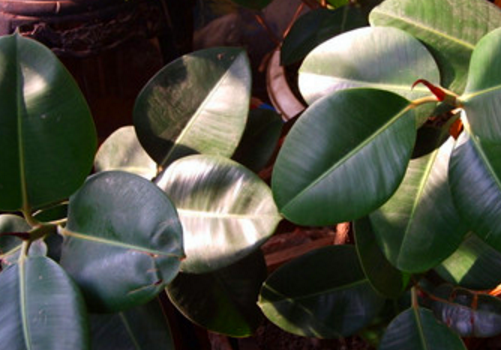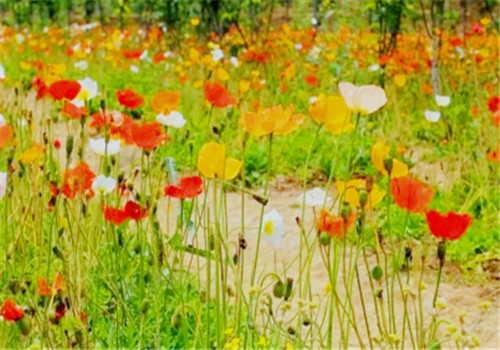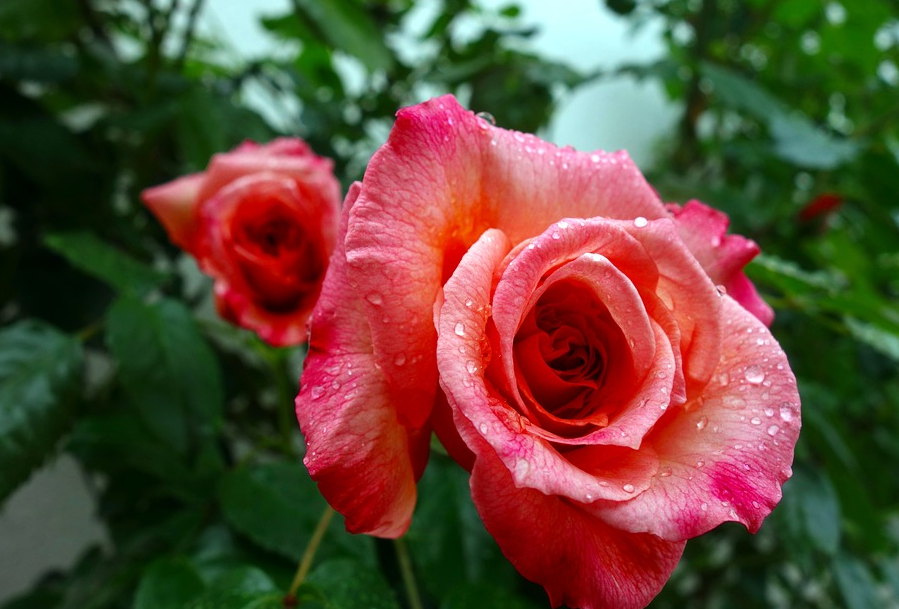How did the rubber tree lose its leaves? Attach breeding methods and matters needing attention!
Rubber tree has stout branchlets, broad, thick leaves, bright leathery, green or dark green, so it is a good potted foliage plant. So, how did the rubber tree lose its leaves? What are the breeding methods and precautions for rubber trees?

First, how did the rubber tree lose its leaves?
The main results are as follows: 1. The plant did not change the basin for a long time, resulting in soil consolidation. At the initial stage of rubber tree growth, the basin needs to be changed once a year, and the basin diameter is larger every year. After growing for 6 to 8 years, the basin can be changed every three years. If the basin is not changed for a long time, the basin soil will be seriously consolidated and the soil ventilation will be poor. It will cause asphyxiation and necrosis of the fibrous roots of rubber trees, unable to absorb water and nutrients, and cause plant leaves to wither and fall off.
2. Plants are not fertilized for a long time, and rubber trees like to be fat and watery. Not applying fertilizer for a long time will lead to malnutrition and yellowing of leaves.
3. The winter temperature is on the low side. The lowest growth adaptation temperature of rubber tree is 6-8 degrees. If the room temperature is lower than 5 degrees in winter, the withered and yellow leaves will occur.
4. Watering or fertilizing too much. Although the rubber tree is a water-loving and fertilizer-loving plant, if it is watered and fertilized too much, especially from August to September, when the weather is still muggy, too much water is watered and stagnant water is formed in the basin; or too much water is watered during the overwintering, and the plant is in a dormant period, transpiration is reduced, and the water in the basin can not be discharged in time; or if the raw fertilizer, big fertilizer and thick fertilizer are mistakenly watered, the rotten roots will occur due to water damage and fertilizer damage, resulting in withered and yellow leaves. If the rotten root is caused by fertilizer damage, the root will be accompanied by an unpleasant smell.
5. The indoor air is too dry, and the water in the basin soil is not enough to supply the transpiration of all the leaves, which leads to the yellowing and even shedding of some leaves, especially the old leaves in the lower part.
6. Poor indoor ventilation. If the room is not ventilated for a long time, a large number of harmful gases are accumulated, such as the concentration of carbon dioxide is too high, yellow leaves will also occur.
7. shade for a long time. Rubber tree is a tropical tree species, like the sun, not resistant to shade, if you do not see the sun for a long time indoors, there will be yellow leaves.
8. May be infected with Botrytis cinerea
2. Culture methods and matters needing attention of rubber trees
1. Adjustment of light. Rubber trees like light, growing period above medium intensity light, but in summer to avoid direct light, so as not to cause leaf burns; winter should be placed in the vicinity of sufficient indoor light, if placed in shade for a long time, it is easy to cause leaves yellowing or falling leaves. In addition, the rubber tree has a stubborn nature, once it grows, it can not easily move the flowerpot, but if it grows too strong in a certain direction, it should change direction properly to promote its balanced growth.
2. Temperature adjustment. Rubber trees prefer high temperature environment, and the suitable temperature for growth is 25-30 ℃, but when it is more than 35 ℃, it should be moved to a cool and ventilated place. The room temperature should be kept above 10 ℃ in winter, otherwise the leaves will turn black and yellow or even fall off. It is also easy to cause root rot if the rubber tree is exposed to low temperature and humid soil for a long time.
3. Watering. Rubber trees like water, during the growth period should ensure adequate water supply, watering on time every day, keep the basin soil moist. In the summer high temperature season, water is watered once every morning and evening, and water is sprayed on the leaves with a spray can. Reduce the amount of water in autumn, and in winter you need to look at soil moisture before deciding whether to water it or not.
4. Fertilization. The rubber tree needs a large amount of fertilizer in the growing period, and it can apply nitrogen-based compound fertilizer or mature thin cake fertilizer and water once a month in the season of about 25 ℃. When young rubber trees change pots every year, humus should be added to the basin soil and sufficient basal fertilizer should be applied. When the adult plant of 4 ~ 8 years is planted in a barrel and topdressing is applied 3 or 4 times a year, the branches and leaves can flourish.
5. The preparation of culture soil. The culture soil of potted rubber trees should be slightly acidic, fertile, moist and rich in humus. The culture soil is often made of peat soil, rotten leaf soil and river sand with a small amount of base fertilizer.
Time: 2019-04-05 Click:
- Prev

Is Beauty Yu poisonous? What's the difference between poppy and poppy? Is it illegal to plant Yu Beauty?
Under the influence of Chinese traditional culture, the word Yu Mei always gives people too much reverie, coupled with the fact that this flower belongs to the poppy family, people naturally associate it with the poppy. So is Beauty Yu poisonous? What's the difference between poppy and poppy? Is it illegal to plant Yu Beauty? Is Yu Mei a drug?
- Next

How is rose leaf yellowing to return a responsibility? What should I do?
Rose is known as the queen of flowers, also known as the red moon, the four seasons bloom, generally red, or pink, occasionally white and yellow, can be used as an ornamental plant, can also be used as a medicinal plant. Many people always have yellowing leaves when planting, so what is the yellowing of rose leaves? What should we do?
Related
- Fuxing push coffee new agricultural production and marketing class: lack of small-scale processing plants
- Jujube rice field leisure farm deep ploughing Yilan for five years to create a space for organic food and play
- Nongyu Farm-A trial of organic papaya for brave women with advanced technology
- Four points for attention in the prevention and control of diseases and insect pests of edible fungi
- How to add nutrient solution to Edible Fungi
- Is there any good way to control edible fungus mites?
- Open Inoculation Technology of Edible Fungi
- Is there any clever way to use fertilizer for edible fungus in winter?
- What agents are used to kill the pathogens of edible fungi in the mushroom shed?
- Rapid drying of Edible Fungi

